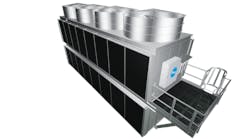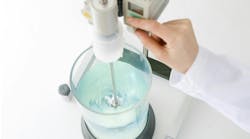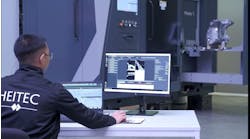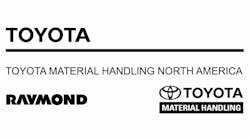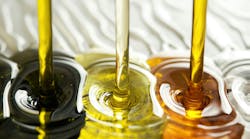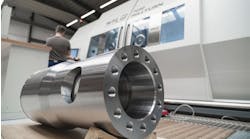... The product is 7075 aluminum extruded at 300-350ºC into round bar with a diameter of 147 mm. The bars are cooled to about 150ºC during contact with regular tap water at about 40ºC for 1.5-2 min. During cooling, the entire bar is in contact with water, but the white substance occurs only where the water last dried on the bar. A day later the bars are annealed for 8-9 hr at 400°-450°C in an electric furnace. When we open the doors of the annealing furnace there is some smoke inside the furnace (cause of smoke unknown). The tiny blisters occur only where the white substance forms. The strange thing is that we do this often, but blisters don’t always occur. We know them as “diffusion blisters” the theory being that it comes from H2O molecules being enclosed in the aluminum and forming hydrogen during annealing. But, why do the blisters occur only where the white substance forms?
A: You have a very interesting problem. I have no idea what the white substance is, but it might be some form of salt that contaminates your water tanks. Some salts are deliquescent; that is they absorb moisture from the atmosphere even after “drying out.” That might be a source of the hydrogen.
You might also be experiencing atmospheric blisters that come from contact with products of combustion — e.g., indirect-firing furnaces that have leaks in the heat-exchanger tubes. But, your furnaces are electric, which eliminates that theory. On the other hand, if the salt is indeed one that absorbs moisture, then this could explain the correspondence of blisters with the white substance.
Check to see what happens in the annealing furnace after the white substance is washed off in a separate clear water rinse. Does it indeed wash off?
Generally, blisters are traceable to atomic hydrogen, not molecular hydrogen. This means that it has to form on breakdown of water vapor that was part of a chemical or combustion reaction because atomic hydrogen is unstable and will form molecular hydrogen very quickly unless there is a heated metal (Al) nearby that could absorb same.
This last point is where I have difficulty, because you use an electric furnace and there are no products of combustion present. Otherwise I am at a loss for an explanation unless the absorbed moisture in the salt was in compound form and released H on heating.
Go after the white substance (salt?) as the culprit by washing it off in clear water. I suggest sending scrapings to a chemical laboratory for analysis.
For more than 40 years H. James Henning held key technical positions in the forging industry, including as director of technology for the Forging Industry Association, and as president of Henning Education Services, a Columbus, OH, firm specializing in customized education and training in forging technologies.
Guidelines and recommendations offered in this column are based on information believed to be reliable and are supplied in good faith but without guarantee. Operational conditions that exist in individual plants and facilities vary widely. Users of this information should adapt it, and always exercise independent discretion in establishing plant or facility operating practice.

